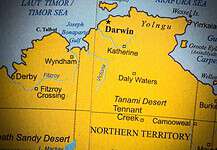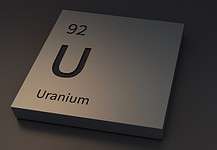ENCOURAGING preliminary results for nickel and copper indicators have been returned from exploration on a “small portion” of Thor Mining’s tenement holding at the Dundas gold project in southern WA, according to a recent announcement from the company.
Thor reported that analysis of surface geochemical cross sections of calcrete samples from a 25 square kilometre area of exploration tenement had been completed, as part of exploration being conducted in conjunction with the ongoing gold exploration program at Dundas.
According to the company, three areas of elevated nickel and one of copper, plus one site of coincident copper and nickel, were revealed in the analysis.
“This is an encouraging start in assessing the nickel prospectivity of the Dundas project,” Thor executive chairman Mick Billing said.
“A number of the results are clearly anomalous, and the spacing between the sample collection points is extremely broad.
“We will be following up with an infill program to determine the potential for nickel-focussed drill targets.”
Thor reported that the follow-up work was expected to take place during early 2013.
A planned aircore geochemical drilling program to further assess the surface calcrete anomalies, along with deeper reverse circulation drilling program seeking gold mineralisation, are also scheduled for 2013.
The area where the discoveries were made, E 63/1102, is in the Fraser Complex, a formation north-north east of most of Thor’s Dundas project land holdings. The company reported that the geology of the Fraser Complex comprised mafic and ultramafic rocks that hosted significant recent nickel discoveries. The area also includes a buffer zone to allow for irregularities in the interpreted formation contact, as the site is mostly under several metres of sediment cover.
Thor owns 60 per cent of the Dundas project, about 100km east-southeast of Norseman in the Albany-Fraser province, and is in negotiations to increase its stake to 80 per cent.
The Albany-Fraser belt has hosted several significant gold discoveries including the multimillion-ounce Tropicana deposit. It also is home to nickel prospects such as the Nova project, which is about 80km north-north east of Dundas, and historical intercepts at nearby Gnama South and Talbot.
The Dundas project’s tenements are on the general strike extension of the prolific gold-bearing Wiluna–Kalgoorlie-Norseman greenstone belt, in an area where the trend of the Albany-Fraser belt is displaced south east by about 50km.
In addition to its interest in the Dundas project, Thor owns 100 per cent of the Molyhil tungsten and molybdenum project north east of Alice Springs; and has rights to acquire up to an 80 per cent interest in the Spring Hill gold project in the Northern Territory, which it is developing in joint venture with Western Desert Resources.
On December 4, 2012, Thor announced that it had received a signed instrument of transfer from Western Desert for an additional interest in Spring Hill that took its total holding in the project, subject to Northern Territory Government approval, to 51 per cent.
“In addition, the terms of the staged acquisition [of Spring Hill by Thor] have been varied to set the timing of the pricing of the securities to be issued to Western Desert Resources in consideration for the acquisition, to the date the companies agreed that the expenditure requirement had been met,” Thor reported.
“As a result, 21,666,667 Thor CDIs [CHESS Depository Interests] in total will be issued to Western Desert Resources upon receipt of ministerial approval to the transfer.”
Mr Billing said Thor was “delighted” to have achieved its increase in equity ownership of the Spring Hill project. “Our exploration to date has confirmed extensions to the mineralisation, and added to the value of the project, and we still have more targets to test,” he said.
“In addition we will be investigating all options to realise value from the project at an early stage.”
Good early nickel and copper results boost gold project’s prospects
Advertisement






































